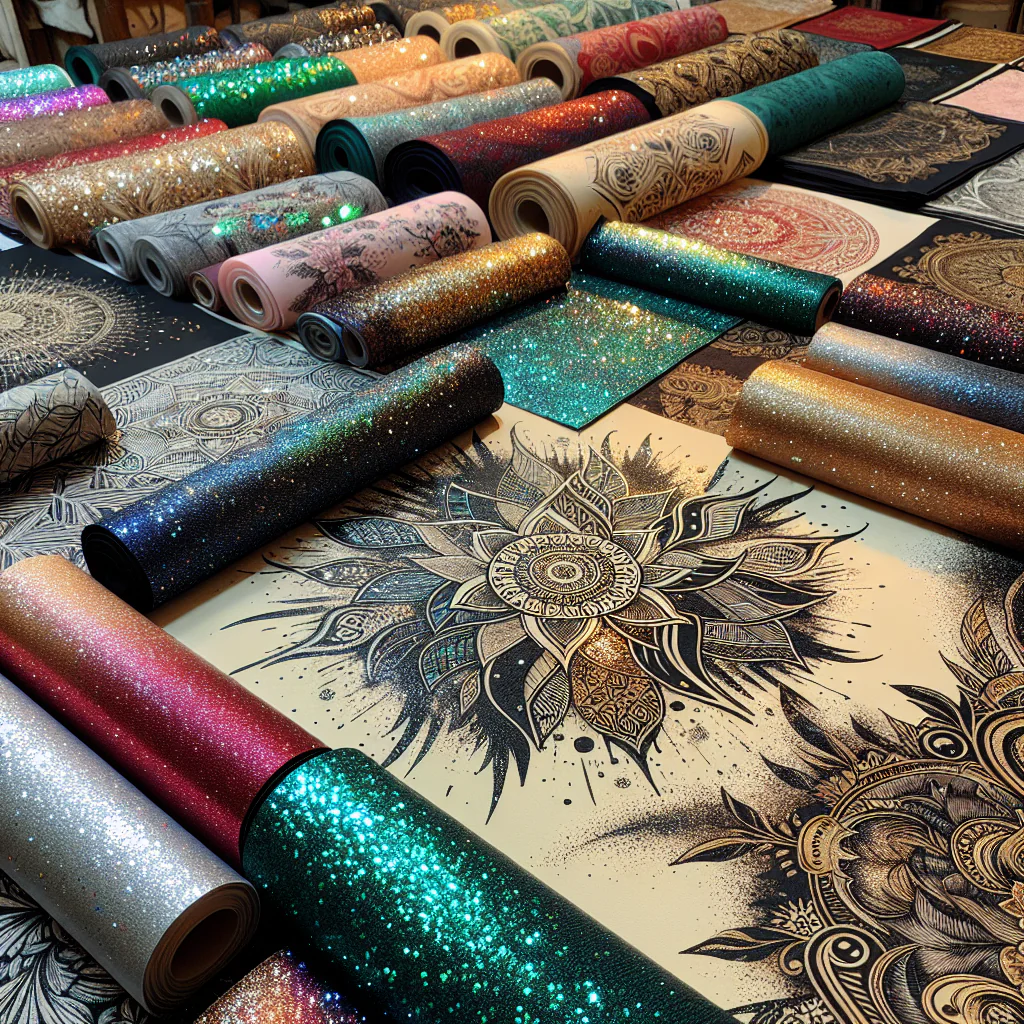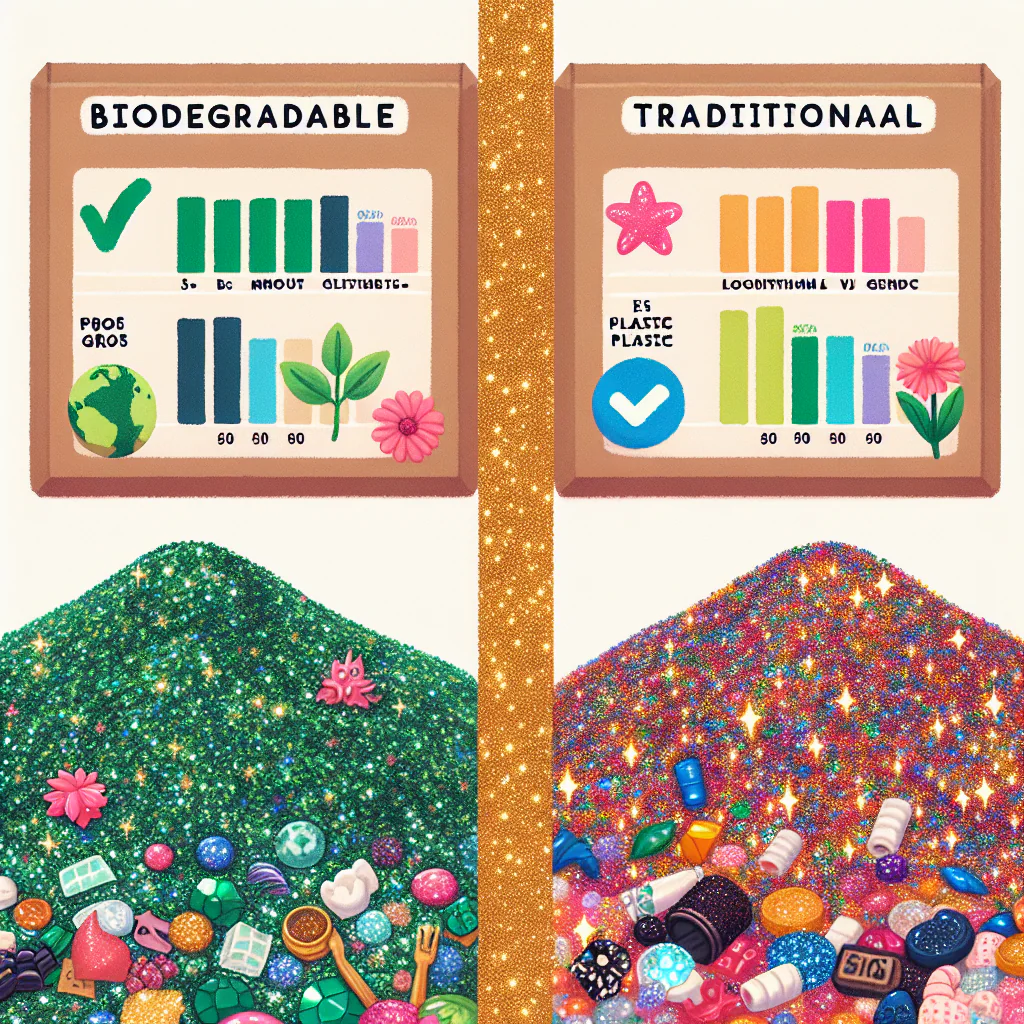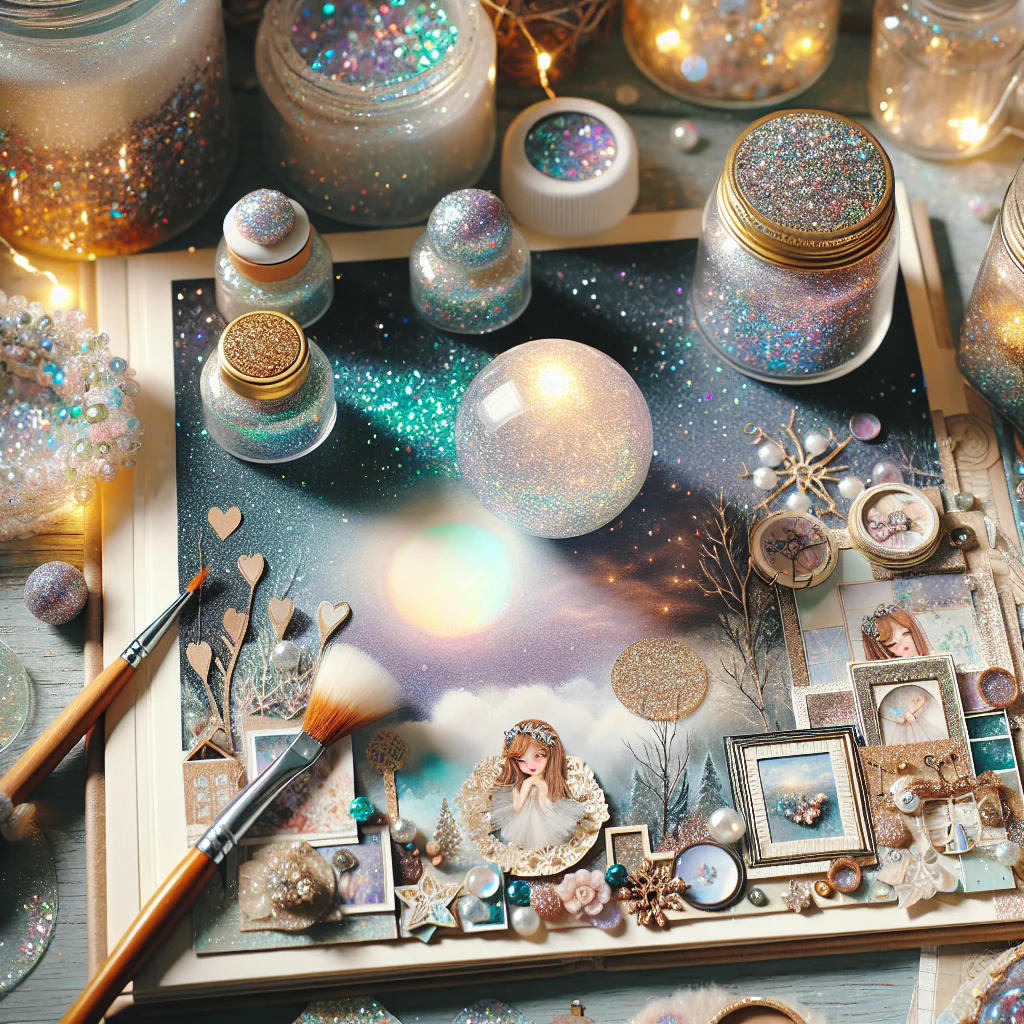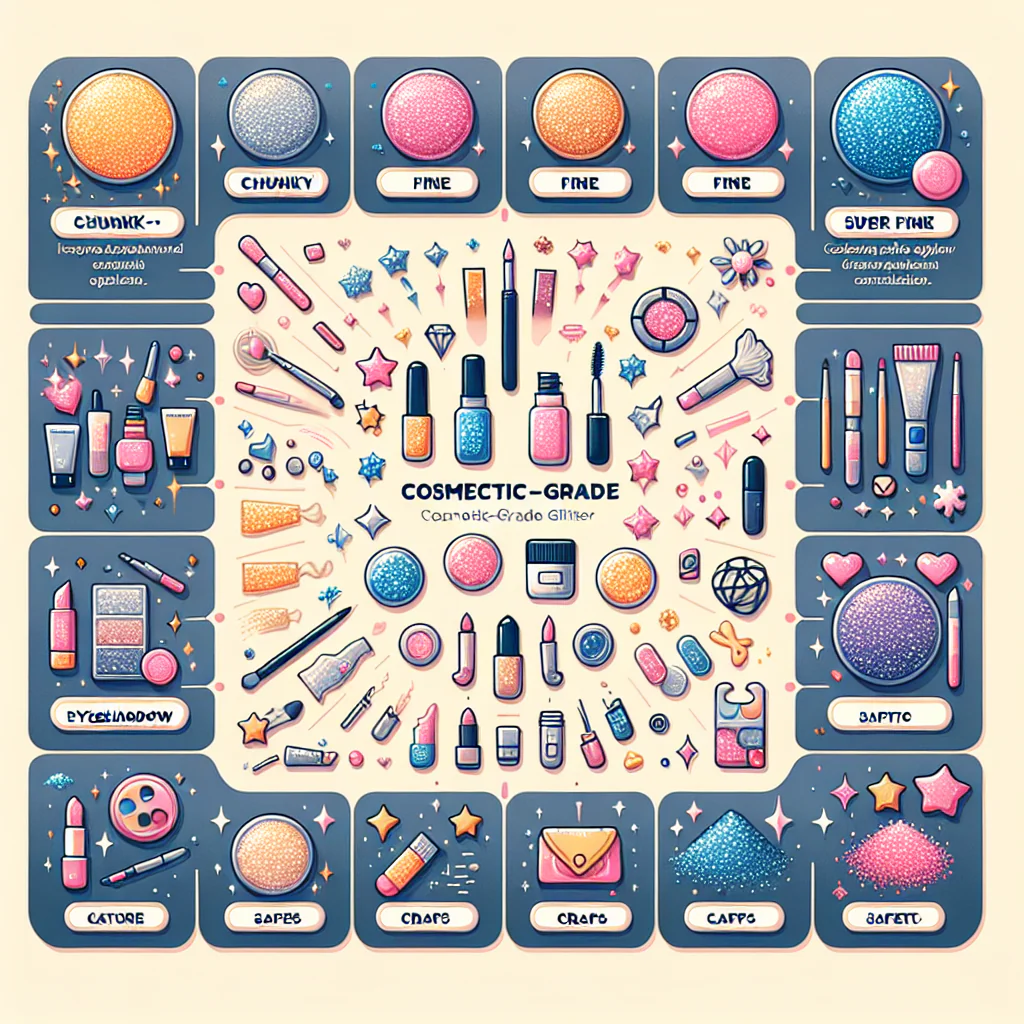-
Table of Contents
- Introduction
- The History of Glitter in Screen Printing: From Ancient Times to Modern Techniques
- Innovative Ways to Incorporate Glitter into Screen Printing Designs for Maximum Impact
- The Science Behind Glitter: How Different Types of Glitter Create Unique Effects on Fabrics and Leather
- Q&A
- Conclusion
“Add a touch of sparkle to your designs with Glitter for Screen Printing – the ultimate choice for vibrant and eye-catching fabrics and leather.”
Introduction
Glitter is a popular material used in screen printing to add a touch of sparkle and shine to fabrics and leather. It is a versatile and eye-catching element that can enhance the visual impact of any design. Glitter can be applied in various ways, such as through screen printing techniques, heat transfer, or even hand application. Its reflective properties make it a popular choice for creating attention-grabbing designs on clothing, accessories, and other textile products. In this introduction, we will explore the use of glitter in screen printing and how it can elevate the visual appeal of fabrics and leather.
The History of Glitter in Screen Printing: From Ancient Times to Modern Techniques
Glitter has been used for centuries to add a touch of sparkle and glamour to various forms of art and decoration. From ancient civilizations to modern techniques, glitter has been a popular choice for enhancing visual impact on fabrics and leather. In this article, we will explore the history of glitter in screen printing and how it has evolved over time.
The earliest evidence of glitter being used in art dates back to ancient Egypt, where it was made from finely ground glass and used to decorate tombs and temples. It was also used in ancient China, where it was made from fish scales and used to create intricate designs on clothing and accessories. Glitter was considered a luxury item and was often reserved for the wealthy and elite.
During the Renaissance period, glitter was used in paintings to add a sense of opulence and grandeur. It was made from ground-up metals such as gold and silver and was applied to paintings using a technique called “gilding.” This involved applying a layer of adhesive to the painting and then sprinkling the glitter on top, creating a shimmering effect.
In the 20th century, glitter became more accessible and was used in various forms of art and decoration. In the 1930s, a man named Henry Ruschmann invented modern glitter by cutting plastic sheets into tiny pieces. This made glitter more affordable and easier to produce, leading to its widespread use in fashion and design.
In the 1960s, screen printing became a popular technique for printing designs onto fabrics and leather. Screen printing involves using a mesh screen to transfer ink onto a surface, creating a crisp and detailed image. Glitter was soon incorporated into this process, adding a new dimension to screen printing.
Initially, glitter was applied to screen prints by hand, using a stencil or by sprinkling it onto wet ink. This method was time-consuming and often resulted in uneven distribution of glitter. However, with advancements in technology, glitter can now be incorporated into the screen printing process itself.
One of the most common techniques used for incorporating glitter into screen printing is called “flocking.” This involves applying a layer of adhesive to the fabric or leather and then sprinkling glitter onto it. The excess glitter is then removed, leaving a sparkling design on the surface. This technique is commonly used for creating glittery t-shirts, bags, and other accessories.
Another technique used for incorporating glitter into screen printing is called “glitter ink.” This involves mixing glitter particles with ink and then using it to print designs onto fabrics and leather. This method allows for more control over the distribution of glitter and can create a more uniform and vibrant effect.
In recent years, advancements in technology have led to the development of new techniques for incorporating glitter into screen printing. One such technique is called “glitter foil transfer.” This involves using a heat press to transfer a layer of glitter foil onto the fabric or leather, creating a shiny and reflective design.
In conclusion, glitter has a long and rich history in the world of art and decoration. From ancient civilizations to modern techniques, it has been used to add a touch of sparkle and glamour to various forms of design. In screen printing, glitter has evolved from being applied by hand to being incorporated into the printing process itself, allowing for more control and precision. With the continuous advancements in technology, we can only imagine what new and innovative techniques will be developed in the future to enhance the visual impact of glitter in screen printing.
Innovative Ways to Incorporate Glitter into Screen Printing Designs for Maximum Impact
Screen printing has been a popular method for creating designs on fabrics and leather for decades. It involves using a mesh screen to transfer ink onto a surface, resulting in vibrant and long-lasting designs. However, with the ever-evolving fashion industry, designers are constantly looking for ways to make their designs stand out and catch the eye of consumers. One way to achieve this is by incorporating glitter into screen printing designs.
Glitter has been a staple in the fashion world for its ability to add a touch of sparkle and glamour to any outfit. It is no surprise that it has now made its way into screen printing, offering a new and innovative way to enhance the visual impact of designs on fabrics and leather. In this article, we will explore the various ways in which glitter can be incorporated into screen printing designs for maximum impact.
The first and most common way to use glitter in screen printing is by mixing it with the ink. This method involves adding glitter particles to the ink before it is transferred onto the fabric or leather. The result is a design that shimmers and catches the light, adding a unique and eye-catching element to the overall design. This method works best with lighter colored fabrics and leather, as the glitter particles will stand out more against a lighter background.
Another way to incorporate glitter into screen printing designs is by using a glitter adhesive. This method involves printing the design onto the fabric or leather using regular ink, and then applying a glitter adhesive on top of the design. The glitter particles will stick to the adhesive, creating a sparkling effect. This method is ideal for darker colored fabrics and leather, as the glitter particles will stand out more against a darker background.
For those looking for a more subtle way to incorporate glitter into screen printing designs, using a glitter foil may be the perfect option. This method involves printing the design onto the fabric or leather using regular ink, and then applying a heat-activated adhesive on top of the design. A sheet of glitter foil is then placed on top of the adhesive and heat is applied, causing the glitter particles to transfer onto the design. This method creates a more subtle and elegant shimmer, perfect for high-end fashion designs.
In addition to these methods, there are also pre-made glitter inks available in the market. These inks come in a variety of colors and can be used on their own or mixed with regular ink to create a glitter effect. They are easy to use and eliminate the need for mixing glitter particles into the ink, making the screen printing process more efficient.
One of the main advantages of using glitter in screen printing is its versatility. Glitter can be used to create a variety of designs, from simple and subtle to bold and eye-catching. It can also be used on a wide range of fabrics and leather, making it suitable for various fashion applications. Furthermore, glitter is durable and long-lasting, ensuring that the designs will maintain their sparkle even after multiple washes.
In conclusion, incorporating glitter into screen printing designs is an innovative and effective way to enhance the visual impact of designs on fabrics and leather. Whether it is mixed with ink, used with an adhesive, or applied as a foil, glitter adds a touch of glamour and uniqueness to any design. With its versatility and durability, it is no wonder that glitter has become a popular choice among designers looking to make their designs stand out. So why not add a little sparkle to your next screen printing project and see the impact it can make.
The Science Behind Glitter: How Different Types of Glitter Create Unique Effects on Fabrics and Leather
Glitter has been a popular decorative element for centuries, adding a touch of sparkle and glamour to various surfaces. From fashion to home decor, glitter has been used to enhance the visual appeal of different materials. In recent years, glitter has also made its way into the world of screen printing, offering a new and exciting way to add shimmer and shine to fabrics and leather.
But what exactly is glitter, and how does it work? To understand the science behind glitter, we must first understand its composition. Glitter is made up of tiny particles of reflective material, typically plastic or metal, that are coated with a layer of reflective material, such as aluminum or titanium dioxide. These particles are then dyed with various colors to create the dazzling effect we all know and love.
When it comes to screen printing, there are different types of glitter that can be used to achieve unique effects on fabrics and leather. The most common types of glitter used in screen printing are polyester, holographic, and metallic glitter.
Polyester glitter is the most widely used type of glitter in screen printing. It is made from thin, flat pieces of polyester film that are cut into various shapes and sizes. This type of glitter is known for its vibrant colors and high shine, making it perfect for creating eye-catching designs on fabrics and leather. Polyester glitter is also known for its durability, making it a popular choice for screen printing on garments and accessories.
Holographic glitter, on the other hand, is made from a thin layer of polyester film that is coated with a layer of holographic material. This type of glitter creates a mesmerizing 3D effect, with the colors changing depending on the angle of light. Holographic glitter is often used in screen printing to create a unique and dynamic look on fabrics and leather. It is also a popular choice for creating designs with a futuristic or otherworldly feel.
Metallic glitter, as the name suggests, is made from metal particles that are coated with a layer of reflective material. This type of glitter is known for its intense shine and is often used in screen printing to create a metallic or chrome effect on fabrics and leather. Metallic glitter is available in a variety of colors, including gold, silver, and bronze, making it a versatile choice for adding a touch of luxury to any design.
The type of glitter used in screen printing can also affect the printing process and the final result. For example, polyester glitter is lightweight and can be easily mixed with ink, making it suitable for printing fine details and intricate designs. On the other hand, metallic glitter is heavier and can sink to the bottom of the ink, making it more challenging to achieve a consistent print. Holographic glitter, with its 3D effect, can also pose a challenge when trying to achieve precise registration in multi-color prints.
In addition to the type of glitter, the size of the glitter particles can also impact the final result. Fine glitter particles create a more subtle and delicate effect, while larger particles create a bolder and more dramatic look. Screen printers often experiment with different sizes of glitter particles to achieve the desired effect on fabrics and leather.
In conclusion, glitter is not just a pretty decoration; it is a versatile and dynamic element that can enhance the visual impact of fabrics and leather. With different types, colors, and sizes available, screen printers have endless possibilities to create unique and eye-catching designs. So the next time you see a glittery garment or accessory, remember the science behind it and appreciate the skill and creativity that goes into creating such dazzling pieces.
Q&A
Q: What is glitter used for in screen printing?
A: Glitter is used as a decorative element in screen printing to enhance the visual impact of fabrics and leather. It adds a shiny and sparkly effect to the design, making it stand out and catch the eye.
Q: How is glitter applied in screen printing?
A: Glitter is typically applied using a special glitter ink or adhesive that is screen printed onto the fabric or leather. The glitter particles are then heat set to ensure they adhere to the surface and create a durable and long-lasting design.
Q: What types of fabrics and leather are suitable for glitter screen printing?
A: Glitter screen printing can be done on a variety of fabrics and leather, including cotton, polyester, silk, and even faux leather. It is important to choose a fabric or leather that can withstand the heat setting process without getting damaged.
Conclusion
In conclusion, glitter for screen printing is a highly effective way to enhance the visual impact of fabrics and leather. It adds a touch of sparkle and shine to any design, making it stand out and catch the eye. With a wide range of colors and sizes available, glitter can be used to create unique and eye-catching designs that are sure to make a statement. Additionally, the durability of glitter in screen printing ensures that the design will last and maintain its visual impact over time. Overall, glitter for screen printing is a valuable tool for creating visually stunning and attention-grabbing designs on fabrics and leather.









